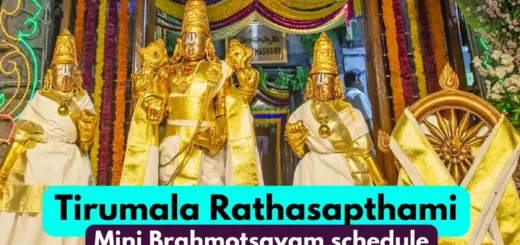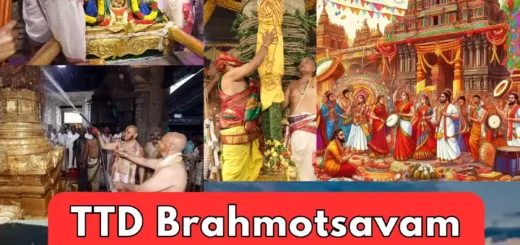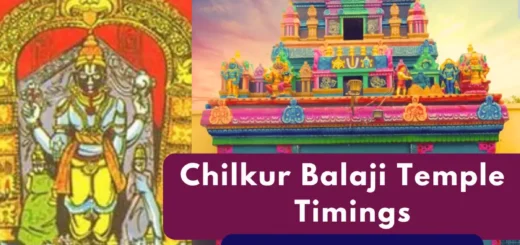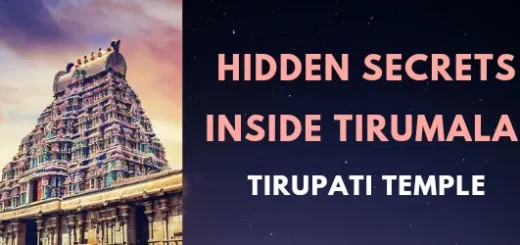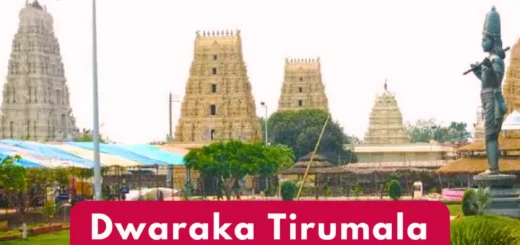TTD Brahmotsavam Vahanam Details | Importance
In this article, we will provide detailed information on all nine days of the TTD Brahmotsavam festival, including the details about the various vahanams (vehicles) used during the procession, and the significance of each day.
We will also outline the day’s schedule and TTD Brahmotsavam Timings for each of the nine days of this grand celebration.
Discover the Magnificent TTD Brahmotsavam Vahanams procession | Learn its Significance
First DAY Brahmotsavam Celebrations
Dhwajarohanam

The first day of the celebration begins with the Dhwajarohana ritual, during which a flag with the emblem of a black garuda is hoisted near the Srivari Alaya Dhwajasthambham.
Pedda Sesha Vahanam
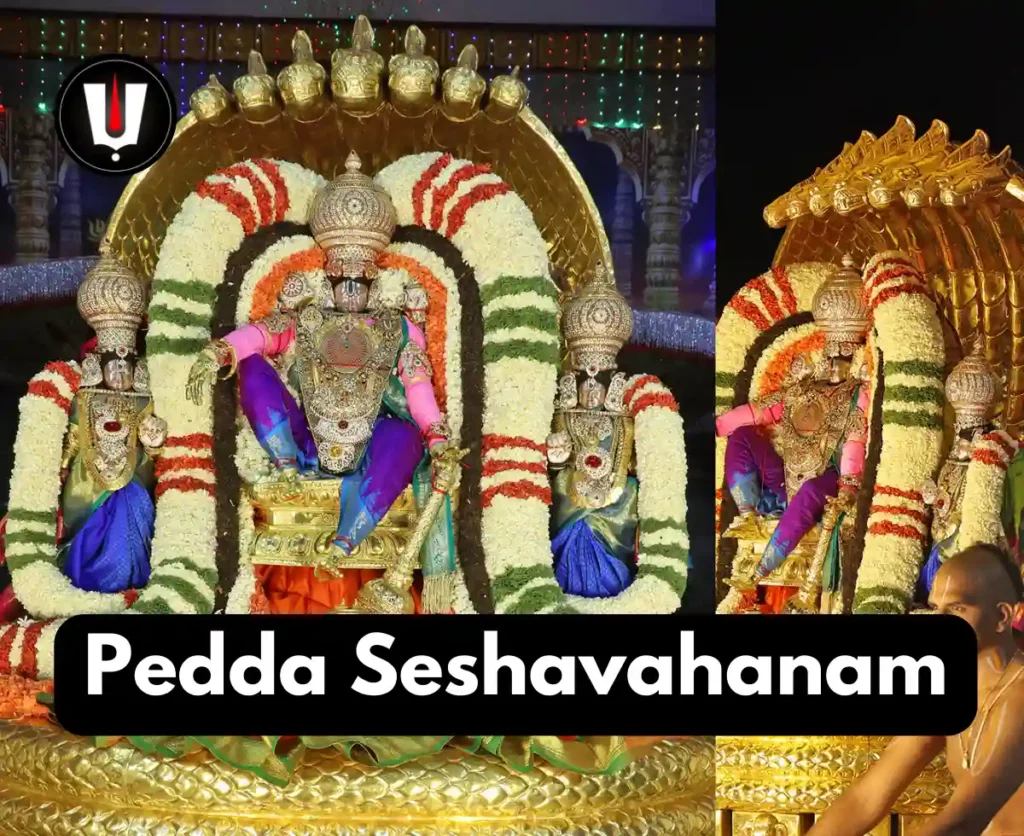
A magnificent procession of Lord Venkateswara seated on the Pedda Seshavahana, travels around the four main streets surrounding the main temple. This procession begins from 10:00 PM until midnight.
( “Sesha” means “to serve.” Adi Sesha is a mythical serpent with a thousand heads, and it is believed that Lord Sri Maha Vishnu rests upon this serpent in his heavenly abode, known as Vaikuntam.)
Tirumala Hills, where Lord Sri Venkateswara resides, is believed to be the manifestation of Adisesha.
To uphold this tradition, the first two days of the Brahmotsavam festival in Tirumala feature a special ceremony.
The Lord is carried in a procession through the streets of Tirumala on a vehicle that resembles Adisesha, which is referred to as Pedda Seshavahana and Chinna Seshavahana.
Second DAY Brahmotsavam Celebrations
Chinna Sesha Vahanam

On the morning of the second day, the Lord is taken in a procession through the temple streets on the Chinna Seshavahana.
In the evening, the deities are brought to the Uyala Mandapam for the Unjal Seva, and later, they are taken through Tirumala streets on the Hamsavahana.
Hamsa vahanam

The bird “Hamsa” or “Swan” means “pure” and is believed to possess remarkable intelligence, capable of distinguishing between right and wrong.
Additionally, the Hamsa has an aesthetically pleasing appearance.
These qualities explain why Lord Brahma utilizes the Hamsa both as his means of transport and as a means to recite the Vedas, (which are thought to have originated from the Soul of Vishnu).
Third DAY Brahmotsavam Celebrations
Simha Vahanam
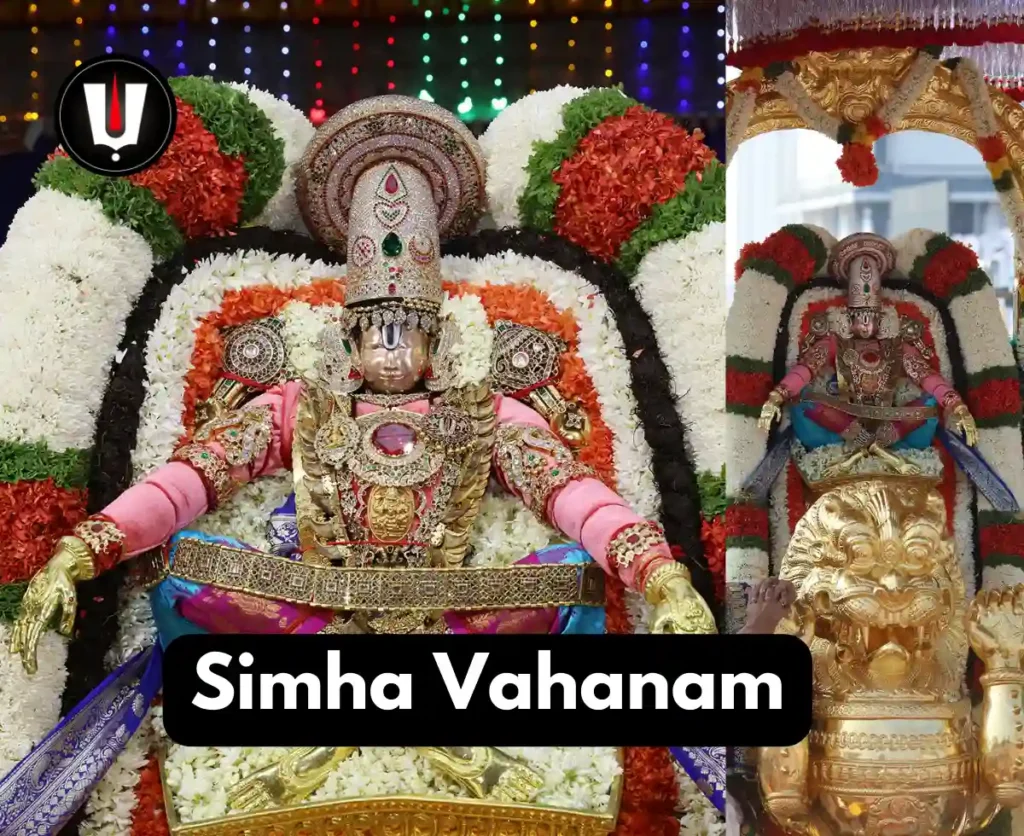
On the third day of the Brahmotsavam festival, the deities are carried on a vahanam shaped like a lion called the Simhavahana.
Simha (lion) is a symbol of regality and power. According to the Bhagvad Gita, the Lord is the Simha among animals (mriganamcha mrigandroham).
The Lord is also known as Hari, which means lion, and is depicted as sitting on a lion, creating a unique image of the Lord sitting on himself.
It is also believed that Lord Venkateswara, once took the form of half-man, half-lion form called Narasimha to defeat the demon Hiranyakashipu.
That’s why on the third day of the Brahmotsavam, the Lord is associated with a lion as his vehicle.
At night, a ceremony known as Unjal Seva is performed.
Mutayala Pandiri

Then deities are placed on a vahanam known as the Mutayalapandiri Vahana.
This vehicle is adorned with a canopy made of pearls. Pearls are chosen for their symbolism of purity and royalty in this context.
Fourth DAY Brahmotsavam Celebrations
Kalpavriksha Vahanam

In the morning of the fourth day, the deities are carried in a vehicle shaped like the Kalpavriksha tree.
It is believed to grant blessings and fulfill the wishes of devotees.
This signifies that the Lord grants boons and fulfils the wishes of his devotees.
Sarvabhoopala Vahana
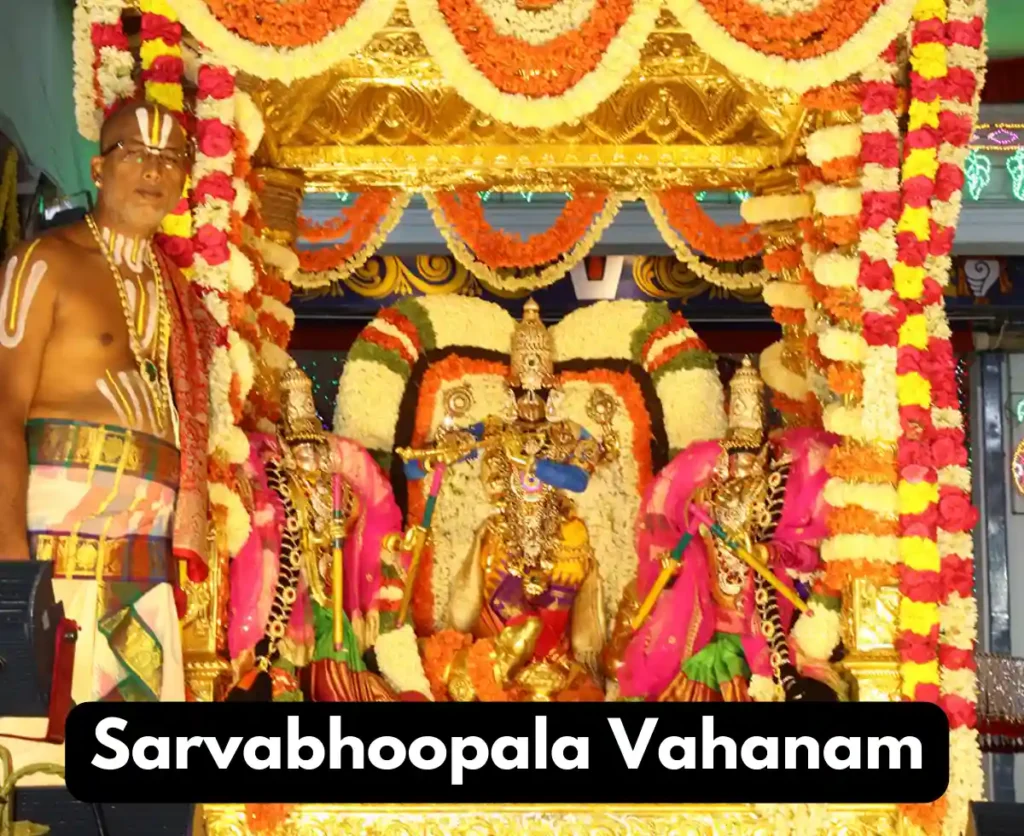
At night, after the Unjal Seva ceremony, the idols of deities are carried on a Sarvabhoopala Vahana,
Sarvabhoopala means ‘all the rulers of the Earth.’ In Hinduism, it’s believed that kings should follow the example of Lord Vishnu by ensuring the protection and well-being of their people, just as Vishnu does for the world (na vishnuhu prithivi pathihi”).
To show their gratitude to Lord Vishnu for his values and to seek his blessings, the kings take the form of Sarvabhoopala Vahana procession on the fourth day of the Brahmotsavam festival.
Fifth DAY Brahmotsavam Celebrations
Mohini Avatarotsavam

On the fifth day, Mohini Avatarotsavam is celebrated in the morning to remember the Lord’s incarnation as Mohini.
According to the legend, the Devas (gods) and the Asuras (demons) performed Ksheera sagara madhanam that resulted in amrit (nectar which when consumed grants immortality) and other sacred qualities.
The Devas and the Asuras battled to get the Amrit. In this conflict, Lord Vishnu transformed into a beautiful woman named Mohini(Beautiful women) and got the amrit for the Devas.
During this celebration, the Lord is adorned in the attire of Mohini and carried in a Pallaki (palanquin) Lord Krishna is also taken in the same procession.
The purpose is to celebrate the assistance given by Lord Vishnu to the Devatas during Ksheera sagara madhanam.
After the Unjal Seva at night, the Lord and his consorts are placed on the Garuda Vahana.
On this day, the Lord is adorned with a grand necklace (Mahaakanti) and a thousand name garland (Sahasranaramala).
Garuda Vahanam
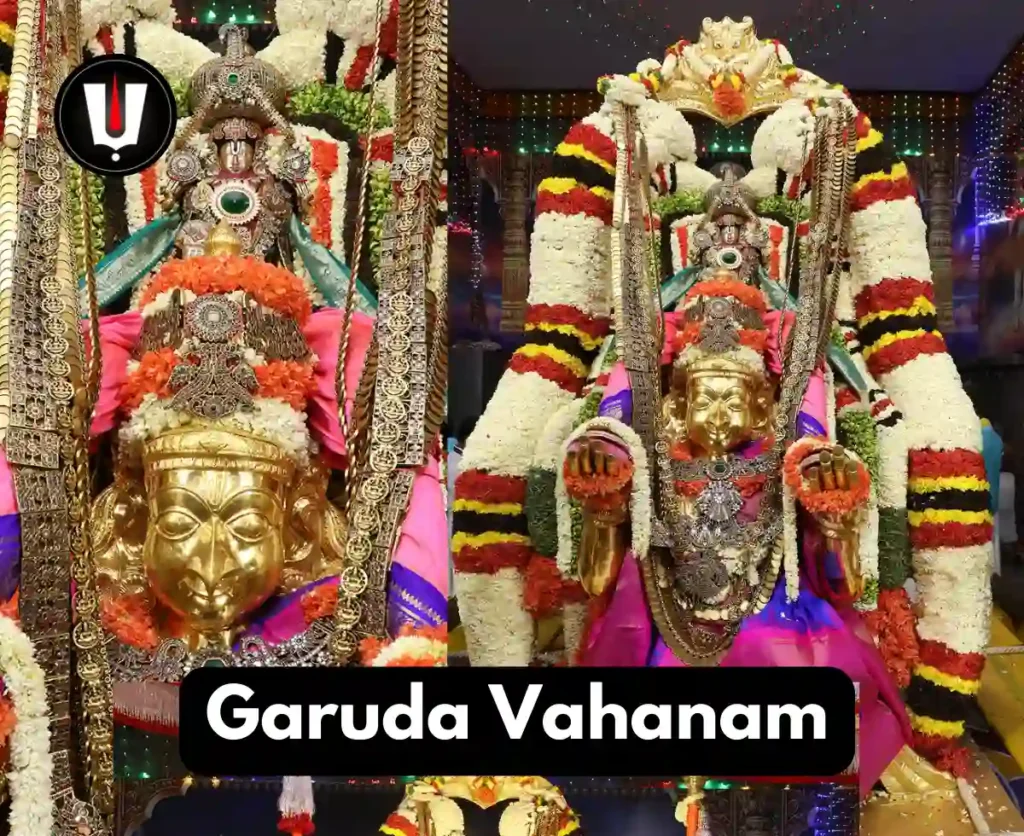
In accordance with ancient Hindu texts, Garuda is regarded as the king of birds and is seen as a representation of the Vedas (referred to as “vedatma vihamgeswara”), while Lord Vishnu is recognized as the God of the Vedas.
Hence, Lord Vishnu regards Garuda as a reflection of Himself.
In the Vaishnava Puranas, Garuda is also known as “periyatiruvadi,” which means the first devotee.
For this reason, Lord Venkateswara chooses Garuda as his vahanam on the most significant day of the Brahmotsavam festival.
Garuda Seva is considered the most significant among all the divine vahanam’s. This day attracts a large number of pilgrims to the temple.
Sixth DAY Brahmotsavam Celebrations
Hanumantha Vahanam

On the morning of the sixth day, the deities are carried on a beautifully decorated Hanuman Vahana.
Hanuman, a devoted follower of Lord Rama (an incarnation of Lord Vishnu), served the Lord so faithfully that even Lord Vishnu couldn’t fully express his gratitude to Hanuman enough.
Devotees consider it a blessing to catch a glimpse of the Lord on Hanumad Vahanam.
On the sixth day, Unjal Seva is not performed; instead, they observe Vasantotsavam, a festival celebrating the arrival of spring.
Gaja Vahanam

During the evening, the Lord is placed on the Gaja Vahana, which represents various symbolic meanings.
The word “Gajam” means elephant, and it’s also referred to as “samajam,” indicating its connection to the Samaveda.
This divine elephant symbolizes wealth (aishwaryam) and is associated with Airavata, the celestial elephant who serves as the mount of Devendra, the ruler of the heavens in Hindu mythology.
Additionally, it links to the story of Gajendramoksham from the Mahabharata, in which Lord Vishnu rescued an elephant from a perilous encounter with a crocodile.
As a result, the Lord is carried in a procession while seated on an elephant-themed vehicle called the Gaja Vahana.
Seventh DAY Brahmotsavam Celebrations
Suryaprabha Vahana

On the seventh day, in the morning, the Lord rides in a Sun chariot called the Suryaprabha Vahanam.
In Hindu belief, Surya, the Sun, is seen as the son of Aditi and is regarded as another manifestation of Lord Vishnu, known as Surya Narayana.
Hindu mythology supports the heliocentric theory, and it believes Lord Vishnu holds that central position (referred to as “dhyassada savitrumandala madhyavarthi”).
To symbolise this belief,, Lord Venkateswara is carried in the Suryaprabha Vahana, which represents the radiance of the Sun.
After the Unjal Seva ceremony at night, the Lord is taken through the well-lit streets of Tirumala seated on the Chandraprabha Vahana, a vehicle shaped like the moon.
Chandraprabha Vahanam

The word “Chandra” refers to the Moon, and in Hindu beliefs, the Moon is seen as a source of coolness and pleasantness.
According to mythology, Chandra is regarded as the leader of the mind and He is also the king of aushadha (medicine).
Riding on the Chandraprabha Vahana is thought to be a calming experience for the Lord.
It’s believed that the Lord’s happiness brings peace to the minds of devotees and leads to a bountiful harvest.
Eighth DAY Brahmotsavam Celebrations
Rathotsavam

On the eighth day of the festival, Rathotsavam is celebrated. During the morning procession, the Lord is seated in a chariot (ratham) .
It’s believed that witnessing Rathotsavam can free a person from the cycle of rebirth.
“You will find statues of Daruka, the charioteer of Lord Sri Krishna, along with the four horses: Saibyam, Sugreevam, Meghapushpam, and Valahakam.
These statues are placed before the beautifully adorned idols of the Lord and his consorts, symbolizing that the Lord’s charioteer is in control of the chariot.”
Aswa Vahanam

In ancient times, horses were a vital part of military forces, serving as one of the four components alongside chariots, elephants, and foot soldiers.
Horses symbolized swiftness and energy, and the word “Aswam” essentially means “one who runs fast.”
When Lord Venkateswara goes for Paruveta (a particular ritual), he rides a horse.
According to Hindu mythology, the horse was created along aide with Sri Mahalakshmi, Airavatham (the divine elephant), and Amritam (the nectar of immortality) during the Ksheera Sagara Madhanam
Ninth DAY Brahmotsavam Celebrations
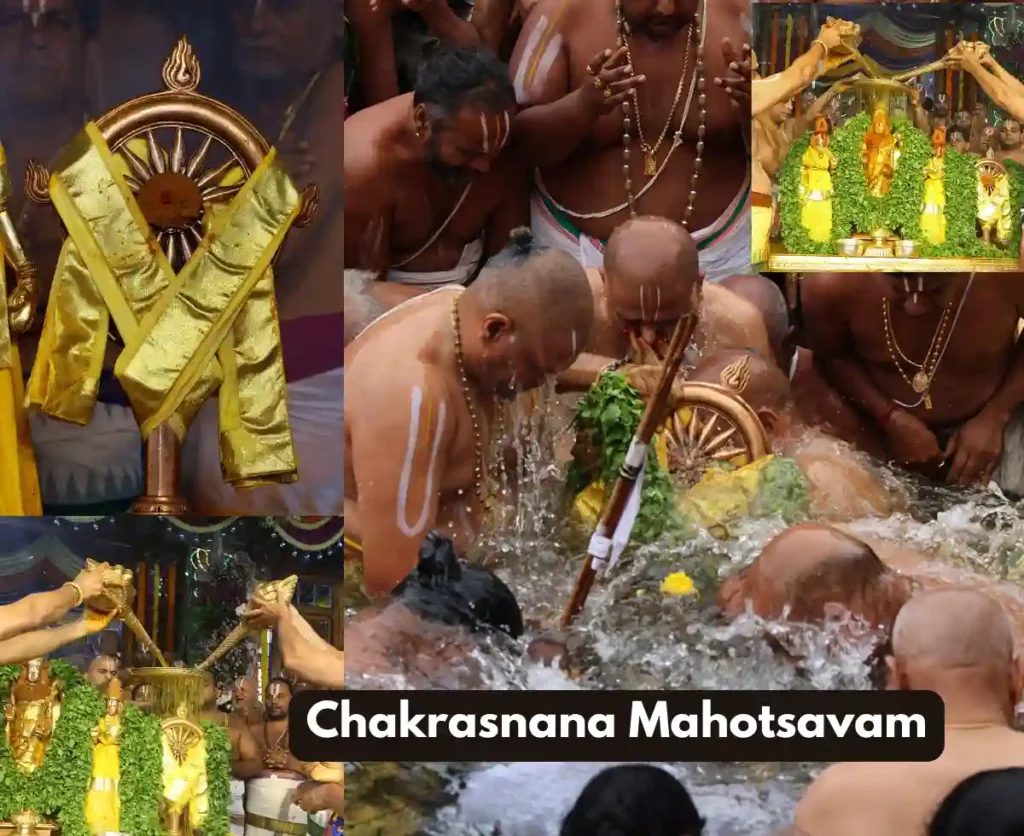
On the final day of the festival, there are three significant events: Pallaki Seva and Chakrasnana Mahotsavam in the morning, followed by Dhwajavarohanam in the evening.
The morning begins with Pallaki Seva and Chakrasnana Mahotsavam. During this time, the processional deities are anointed with oil, turmeric powder, and other sacred substances. Abhishekam, a ritual bathing, are performed
The Sudarsan Chakram, is bathed in the Swami Pushkarini, a sacred pond.
The Garuda flag is then lowered in the evening as part of the Dhwajavarohanam ceremony.
